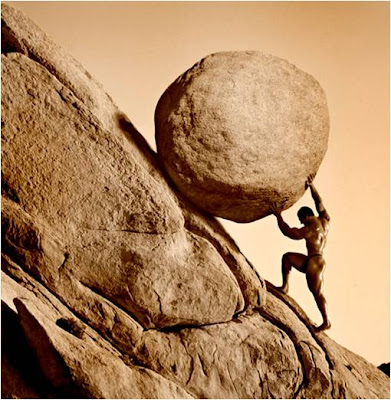I had deadlifted in high school, just like every other high school football player and learned all the bad mechanics as most others and complained of the lower back pain and so on.
As a young strength coach I have made it a priority to find a good mentor (I am lucky enough to have more than one: Chris Ecklund and Peter Blumert), to teach me how to properly deadlift in order to better coach this exercise. I really like what Mike Boyle asks, "Are you a know-it-all or a learn-it-all?" I strive to be the latter.
I started out from the most basic hip hinging exercises and progressively worked into my RDL movements to a modified deadlift pulling from a rack and finally to a conventional deadlift pulling from plates. Through many workouts, technical errors and successes, and a two solid mentors I reached a point where I look like I know what the heck I am doing.
The following video is a compilation of deadlifts I pulled on different dates up to this week. The first video is my first pull from ground level. During the different clips, watch my progressions of hip mobility, tempo, and spinal stability throughout the 3 month period. You will notice in the last 2 clips I have double banded the bar to enforce the correct postural mechanics.
Growing up an athlete and collegiate soccer player a lot of movements were easy to pick up, but putting in work to get better at anything is always always always a better reward than reading it from a book and taking the author's word for it. So if there is a movement you can improve on in order to become a better coach put in the work.
No one expects you to be perfect and know everything in this industry because that is exactly what it is not. The fitness, health and performance industry is always changing with the people you work with and their specific needs. The olympic, power, strength lifts; metabolic and cardio circuits, nutritional guidelines, injury prevention and rehab exercises, etc, are all there; you just have to put in the time and hard work to become better at what you do. How hard are you willing to work in order to become a better coach?



